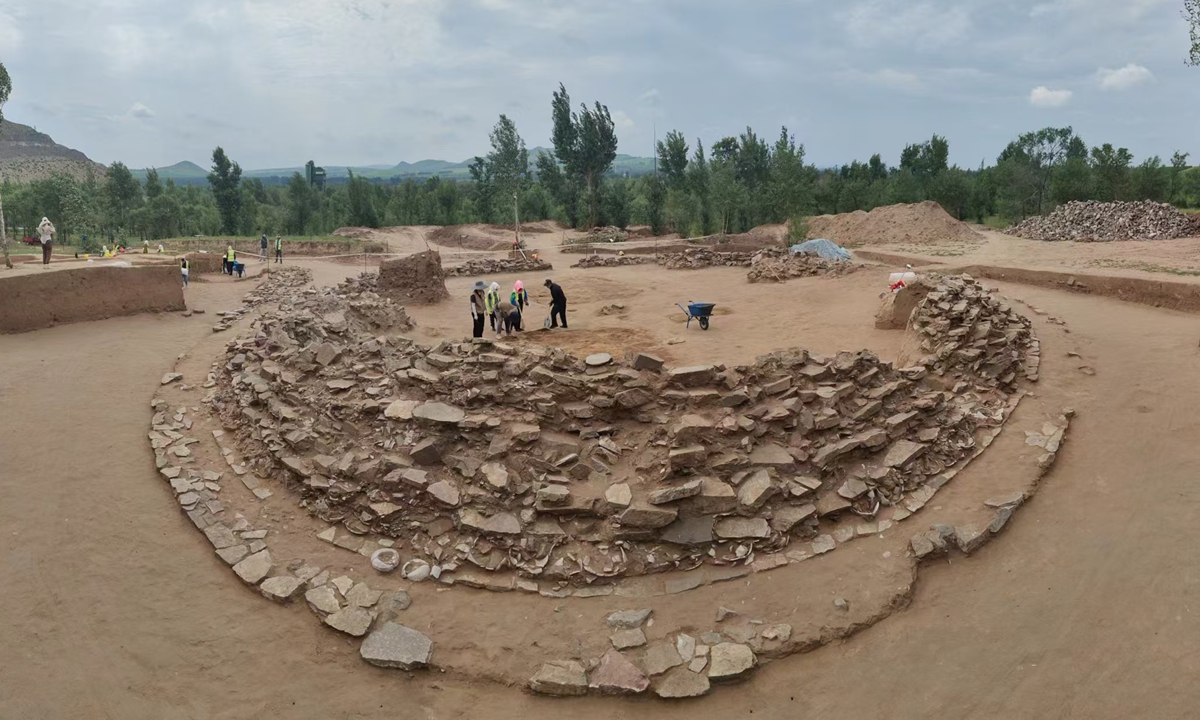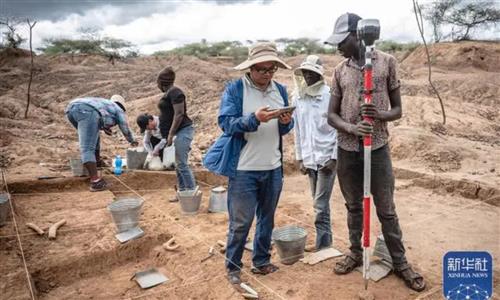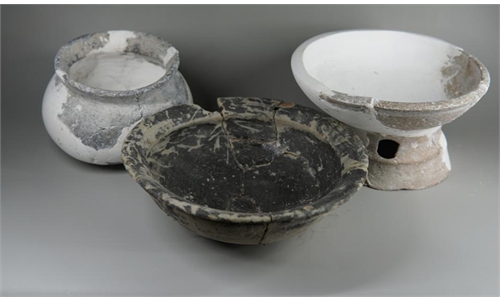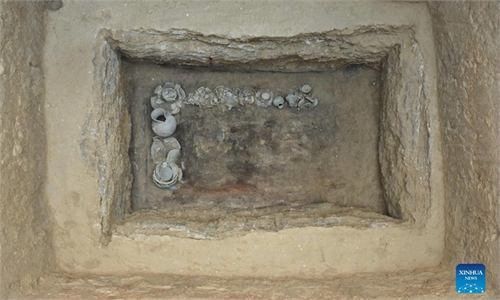ARTS / CULTURE & LEISURE
Latest discoveries of Hongshan culture offer new insights into ancient jade-crafting skills
Offer fresh insights into ancient jade-crafting skills

The stone mound tomb Photo: Courtesy of the excavation team responsible for the archaeological project of the Inner Mongolia Institute of Cultural Relics and Archeology
A series of the latest archaeological discoveries in North China related to the Neolithic Hongshan culture, renowned for its exquisite jade artifacts, have captivated the public's attention.These findings were highlighted by significant phrases such as "the largest," "the first time," and "filling the research gap" during their announcement at the seminar commemorating the 70th anniversary of the naming of the Hongshan culture held on Sunday.
According to the Inner Mongolia Institute of Cultural Relics and Archeology, which conducted the archaeological project, Chinese archaeologists uncovered a complete stone mound tomb dating back to the late period of Hongshan culture.
It is a representative archaeological culture of the middle and late Neolithic period in Chifeng, North China's Inner Mongolia Autonomous Region.
Hundreds of jade artifacts, including the largest jade dragon of the Hongshan culture, have been unearthed, covering almost all types of prehistorical culture.
Additionally, a building site that combines tombs and sacrificial altars was discovered for the first time.
The jade materials, drill cores, and fragments of jade artifacts excavated from the site have offered substantial resources for investigating the processing techniques, sources of jade, and utilization of jade artifacts within the Hongshan culture.
Experts noted that the discovery of this site is highly significant for gaining deeper insights into the social structures, organizational management, human-environment relationships, and jade-processing practices of the late Hongshan culture.
It also plays an important role in exploring the early formation of ritual systems in the ancient Hongshan state and supporting the efforts to have Hongshan culture recognized as a UNESCO World Heritage site.
Wang Meng, a veteran Chinese archaeologist, told the Global Times that the site's jade artifacts reveal "the region's complex cultural and social structures were formed in ancient times."
These objects were used to represent the "social statues and cultural belief dating back then," Wang said.
"Even some of those leftover jade materials discovered at the site can also reveal the jade manufacturing techniques of Hongshan people."
Wang stressed the significance of the largest jade dragon discovered in the country to have been made during the Hongshan culture.
"It is a signature piece showing the refined jade-crafting skills in the region of West Liaohe River. The region's ancient jade culture has inspired the Liangzhu jade culture in [East China's]Zhejiang Province," said Wang.
The remains of the stone mound tomb were discovered near a village in Chifeng.
After three months of archaeological work, researchers have uncovered a total area of 1,400 square meters, discovering 21 tombs, 3 stone piles, 1 ash pit, and 1 sacrificial pit.
They have unearthed more than 200 artifacts, including pottery, stone tools, jade artifacts, bone tools, and shell objects.
Sun Jinsong, director of the Institute of Cultural Relics and Archaeology of the Inner Mongolia Autonomous Region, told the Global Times that the site underwent a "rescuing archaeological excavation" starting from May and in the future, the local experts will carry out "active archaeological works" on the site.
"We plan to carry out sub-archaeological projects surrounding the site," Sun said.
With a history of about 6,500 years, the Hongshan culture is known for its "well-established ritual system," noted Jia Xiaobing, director of the world archaeological research office at the Institute of Archaeology of the Chinese Academy of Social Sciences.
"The Hongshan culture's refined ritual system and its character of merging different philosophical thoughts making significant contributions to investigate the origin of civilizations of China," Jia said.




